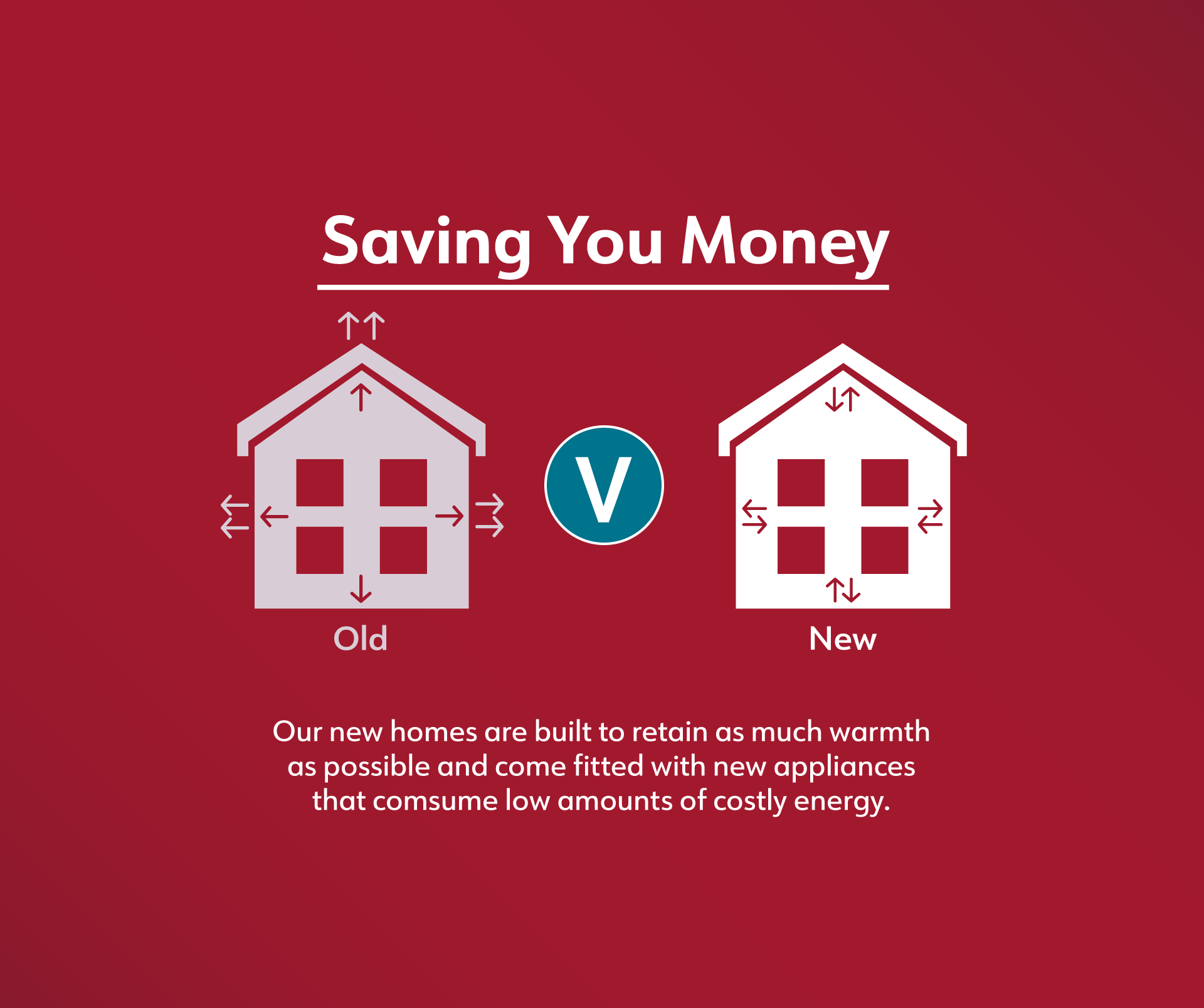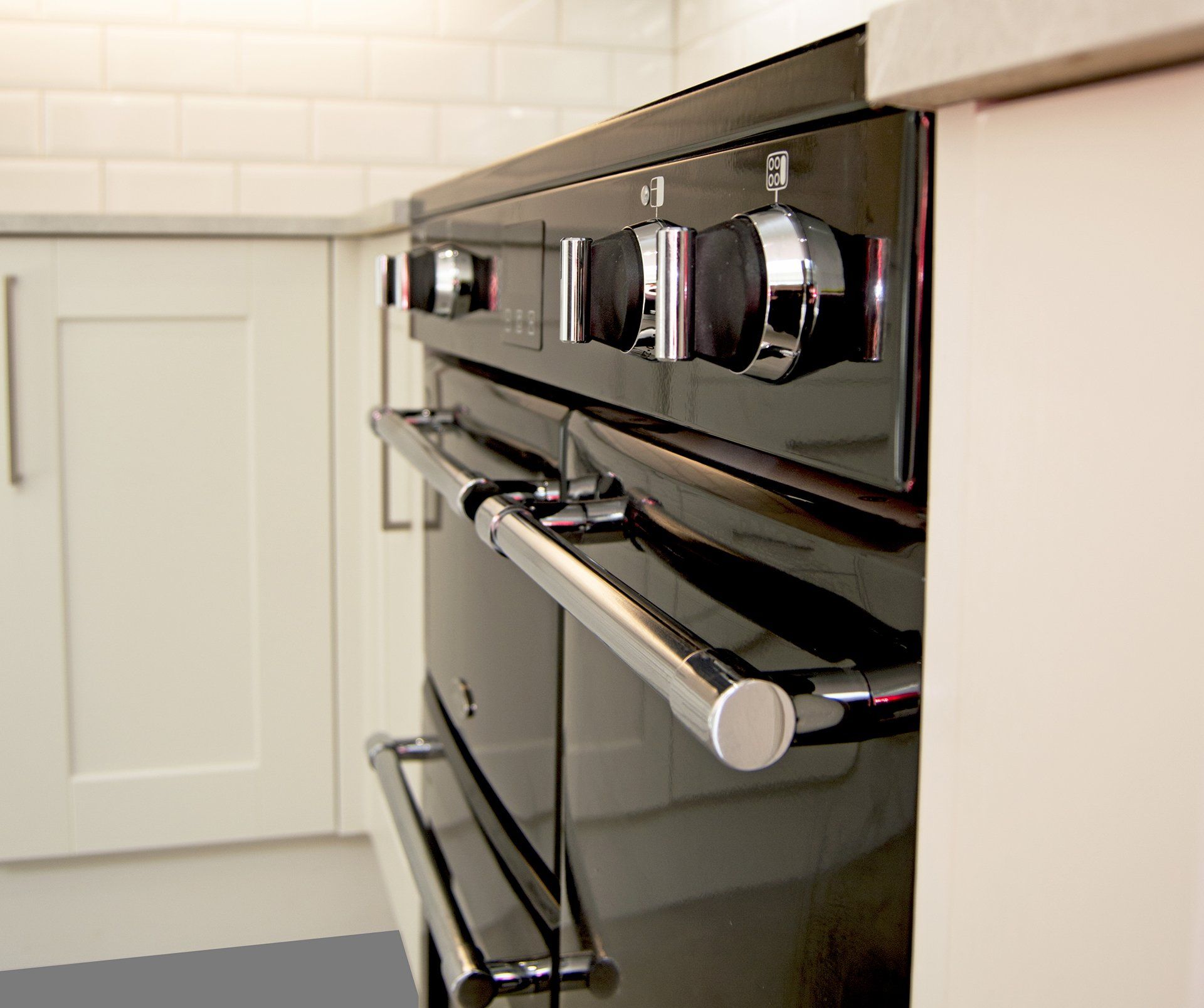HELP TO BUY IS BACK! FIND OUT MORE
HERE
ENERGY EFFICIENCY
YOU CAN PART EXCHANGE YOUR HOME
HERE

Energy Efficient Homes
A new home that costs less to run?
Traditionally we use the most energy (power) warming and living within our homes during the winter months. Warming a home is typically achieved with the use of a gas combi boiler heating system and the running of appliances with mains electric power.
Our homes are built to retain as much warmth as possible as well as having low energy appliances installed for when the above happens. Find out below how we do this.
Top Rated Energy Efficiency
A-rated energy efficienct homes impressively source and retain energy for a low cost. They also reuse energy in a sustainable way and can also trap Co2 whilst in construction. These types of homes are incredibly costly to build and purchase but do cost very little to run (or power) long-term.
These types of homes are typically built as non-comericial projects and often funded by private individuals.
- Our new build homes are B+ EPC rated
Highly Rated Energy Efficiency
A new build home of typical size (83.10m2) used to cost on average £800 per year to run. The average traditional used home used to cost on average £1600.
Figures based on April 2022 - These will have increased due to recent economic changes in kWh charge however the principal fact remains; our new build homes do cost less to run.
- Building Regulations Air Pressure Tested
- Traditionally built without costly gaps and leaks
- New double glazed external doors
- New double glazed windows throughout
- New cavity wall insultion
- New full roof insulation
- New energy efficient heating system
Fair Score - Improvements Needed
Only 40% of the homes in the UK have an EPC C rating. Most of these homes have only just scraped into this score.
C-rated homes have often upgraded the home’s core fabric. It takes a lot of work to place insulation under old floors and pump insulation into cavity walls.
Installing new double-glazing throughout, including doorways is also done alongside other energy efficiency measures such as new boiler systems and low-energy lighting.
The above retro fitting measures are costly, time consuming and often done without reward as warm air still escapes the home easily through historic cracks, holes, gaps and through the roof.
Poor - Improvements Needed
58% of existing homes have an efficiency EPC rating of D-G. Retro-fitting new features to older homes are often not worth the cost and effort.
The regulations of energy performance for rental properties mean they only need to obtain an EPC rating of E! If possible, we recommend buying a new build home as soon as possible to avoid being in this position long-term.
- Features of new build homes last decades
-
Top Rated Energy Efficiency
A-rated energy efficienct homes impressively source and retain energy for a low cost. They also reuse energy in a sustainable way and can also trap Co2 whilst in construction. These types of homes are incredibly costly to build and purchase but do cost very little to run (or power) long-term.
These types of homes are typically built as non-comericial projects and often funded by private individuals.
- Penrhyn homes are B+ EPC rated
-
Highly Rated Energy Efficiency
A new build home of typical size (83.10m2) used to cost on average £800 per year to run. The average traditional used home used to cost on average £1600.
Figures based on April 2022 - These will have increased due to recent economic changes in kWh charge however the principal fact remains; our new build homes do cost less to run.
- Air pressure tested
- Traditionally built without air leaks
- New double glazed external doors
- New double glazing throughout
- New cavity wall insultion
- New full roof insulation
- Energy efficient heating system
- Energy efficient appliances
-
Fair - Improvements Needed
Only 40% of the homes in the UK have an EPC C rating. Most of these homes have only just scraped into this score.
C-rated homes have often upgraded the home’s core fabric. It takes a lot of work to place insulation under old floors and pump insulation into cavity walls.
Installing new double-glazing throughout, including doorways is also done alongside other energy efficiency measures such as new boiler systems and low-energy lighting.
The above retro fitting measures are costly, time consuming and often done without reward as warm air still escapes the home easily through historic cracks, holes, gaps and through the roof.
- Speak to us about a new home
-
Poor - Improvements Needed
58% of existing homes have an efficiency EPC rating of D-G. Retro-fitting new features to older homes are often not worth the cost and effort.
The regulations of energy performance for rental properties mean they only need to obtain an EPC rating of E! If possible, we recommend buying a new build home as soon as possible to avoid being in this position long-term.
- Our homes save you money
A new home has many positives
New Home Benefits
Your headphones should always look amazing! Pick your preferred color.
Colorful
Energy Efficient Core
Energy Efficient Appliances
A new home means new appliances
Wherever possible, as a standard we include appliances that have energy efficiency ratings of A rating. We will provide options if you do not like the standard selection.
The
energy rating
of an appliance
determines how efficient it performs with the energy it consumes.
Energy ratings
are a way to compare particular models on offer. Some might have less features but consume less energy. The rating of an appliance is often found on the product label.

New Homes
A range of house types for all
View our range of homes in each location by selecting a development below
Here to help you
Customer Service
Any concerns that you may have please enter your email address below and we will contact you back asap. Thank you.
Subscribe to our newsletter
We will get back to you as soon as possible.
Please try again later.

